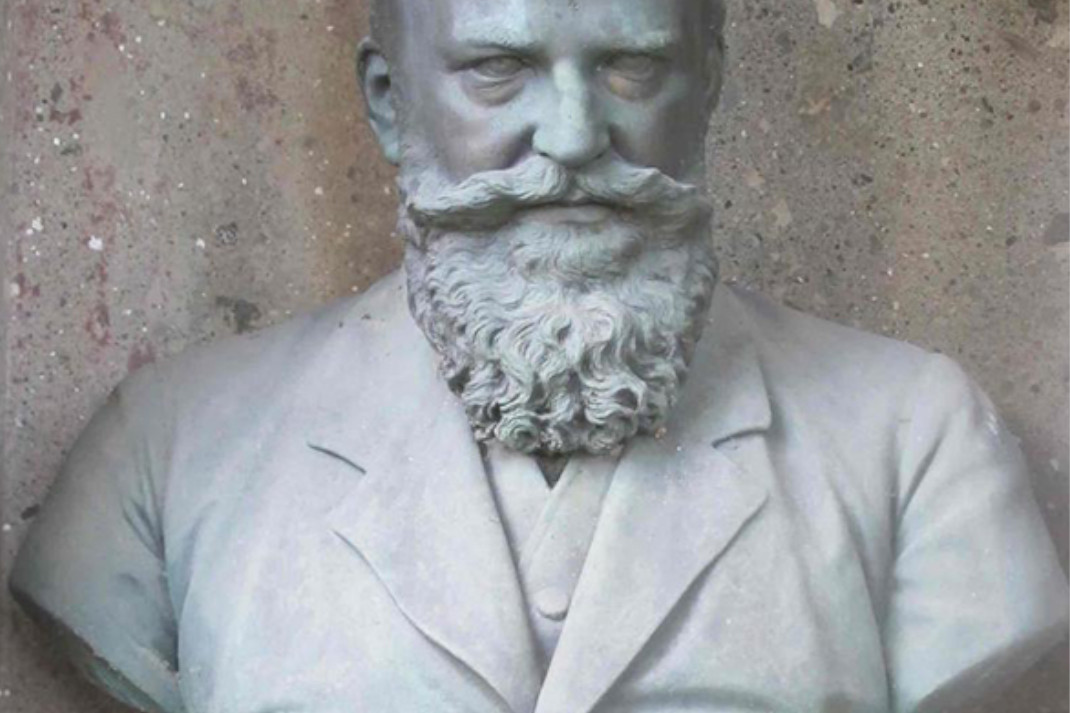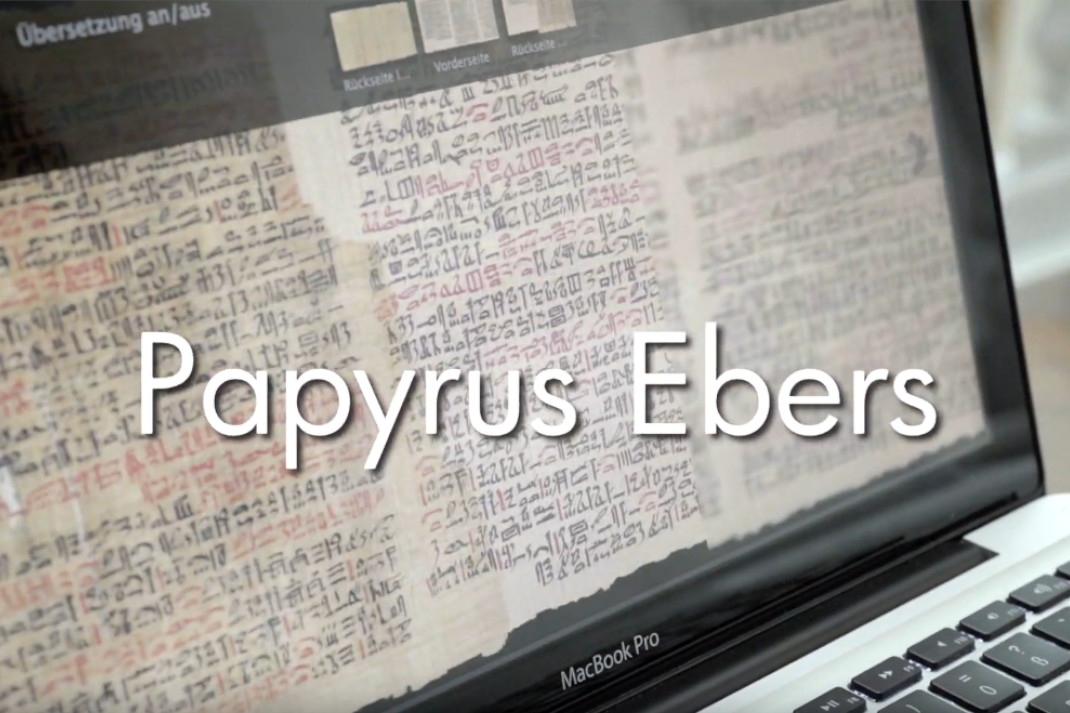Today, the utmost attention is paid to preserving the Ebers Papyrus. Light and too much humidity pose the biggest threats to texts on papyrus. With this in mind, in the nineteenth century the scroll was cut into 29 sections, placed under glass, and kept inside a separate cabinet. Plates XXVIII and XXIX were joined together to make a plate with a length of about 2.50 metres and put on permanent display in Bibliotheca Albertina, probably in the 1920s and 1930s.
During the Second World War, the Ebers Papyrus was initially safeguarded in the vault of Deutsche Bank’s Leipzig branch. It was later removed 60 kilometres southeast of Leipzig to Rochlitz Castle. Following its recovery in 1945, a number of columns were damaged or lost.
The Ebers Papyrus (apart from the final plate and the lost parts) is thought to have been kept under the original glass from 1873 until it was first replaced in 2001. This conservation work became necessary when it emerged that the manner of its conservation was no longer safe or climate-proof. The reason is that the 28 sections (with the exception of plate I with the calendar on the back as well as the two plates XXVIII and XXIX with additional text on the reverse) had been glued to cardboard containing acid and largely sealed airtight in wooden picture frames. This led to tension in the glued joints, causing slight cracks to appear in the fragmentary parts. Damaged remaining fragments still kept under temporary glass dating back to when the scroll was taken out of storage during the war were also renewed at this time. This newer glazing also included breathable corner pieces without glued joints. Following the latest findings on preserving items under glass without the risk of unwanted chemical reactions, it was decided to replace the glass protecting the Ebers Papyrus again in 2020 with chemically stable safety glass. Today, the original Ebers Papyrus is preserved in shockproof packaging in the vault of Bibliotheca Albertina.
The original Ebers Papyrus has been safeguarded under constant climatic conditions in the vault of Bibliotheca Albertina since 1998. It was displayed in exhibitions in 2002 and 2010.



